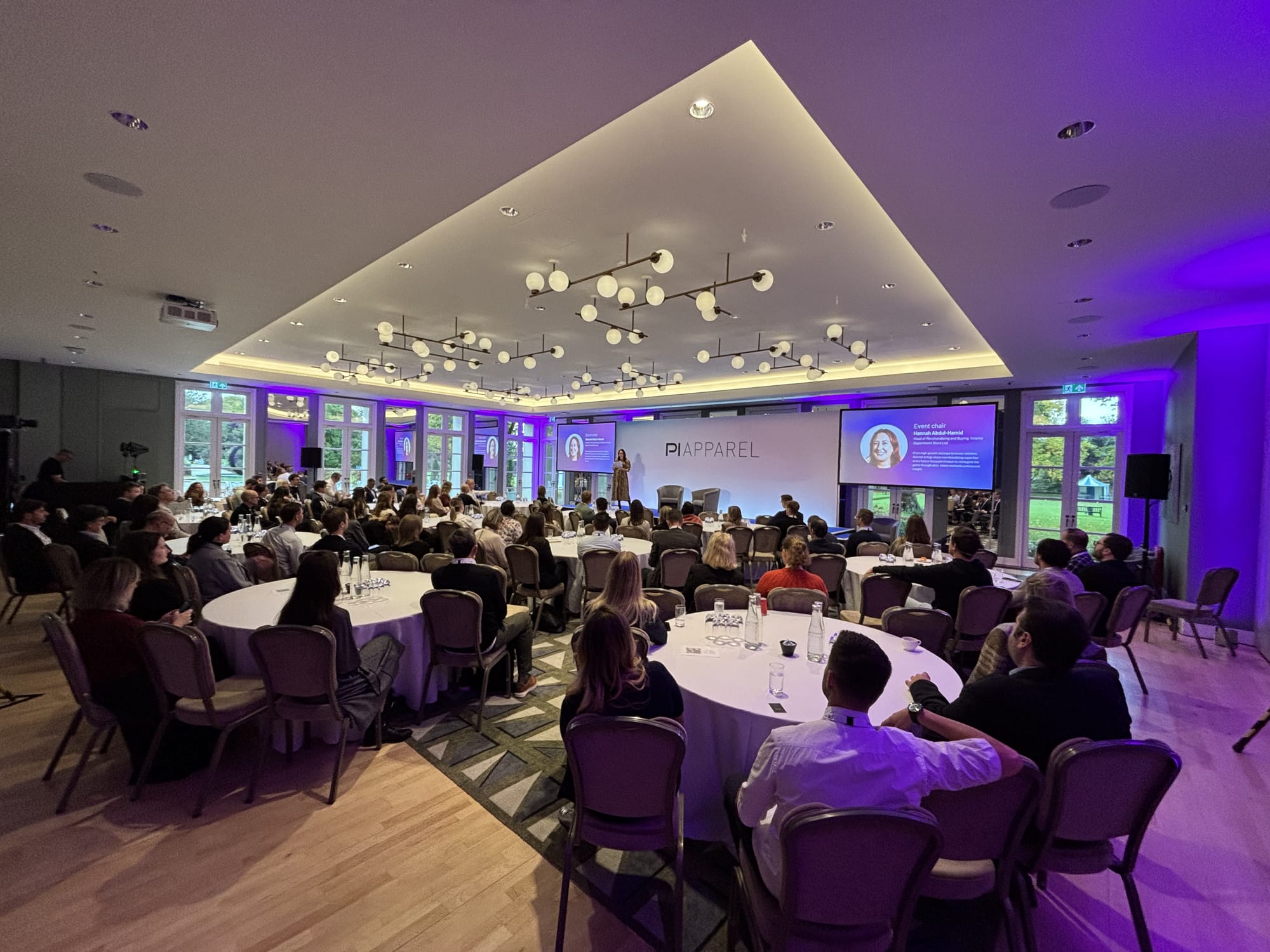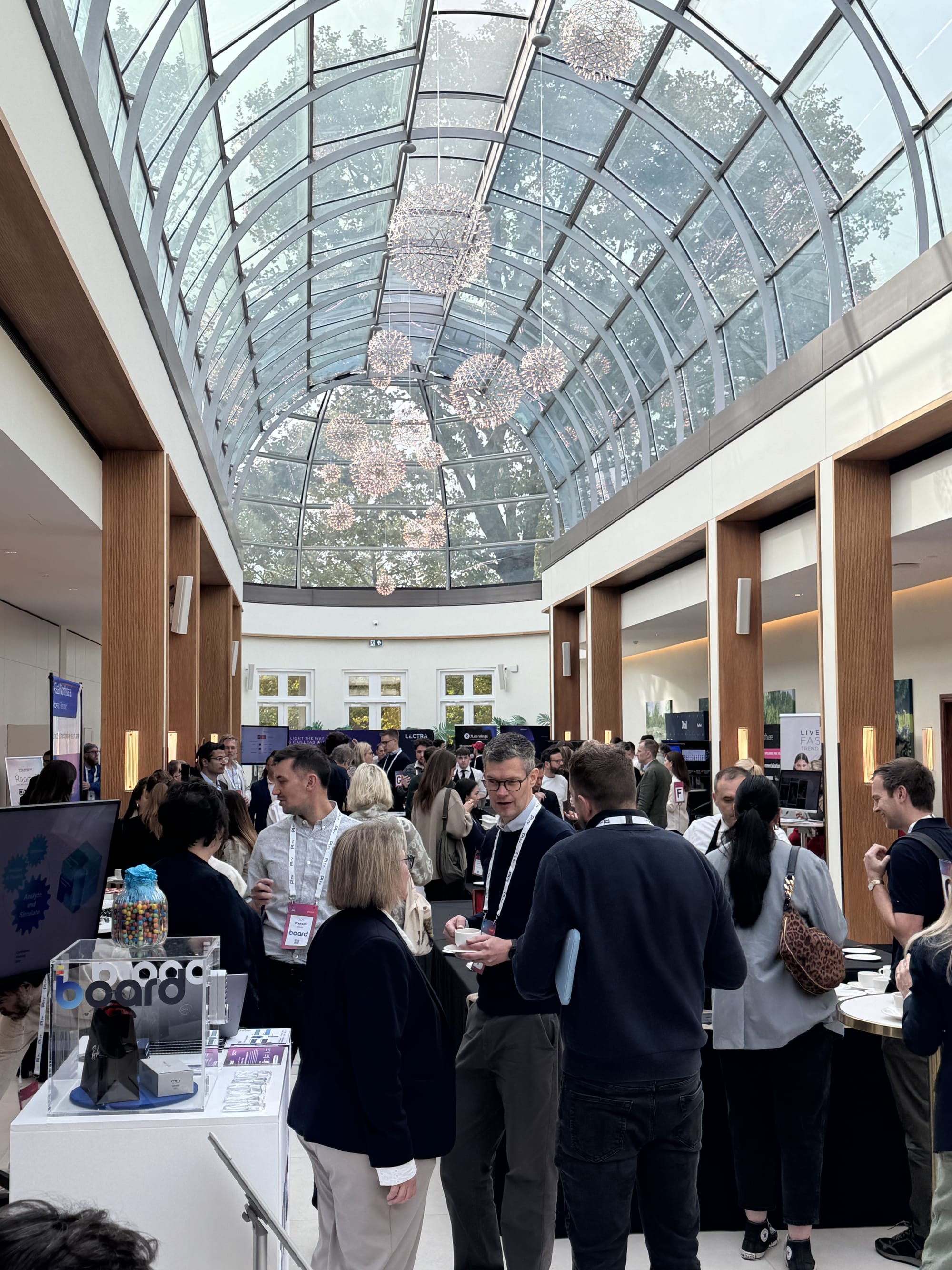Merchandise planning doesn’t usually make headlines. Yet at this year’s PI Merchandise Planning Europe forum in London, it felt like the discipline was being recast; not as a back-office control function, but as the industry’s nervous system. At its core, the event underscored a fundamental shift: in a world of AI disruption, volatile consumers, and tightening regulation, planning is where strategy meets reality; the decisions that determine not just profit margins, but sustainability commitments and consumer trust.
Across two days, the sharpest conversations revealed not a perfect consensus, but productive friction. Friction between technology and trust. Between ambition and data integrity. Between consumer volatility and operational stability. The value of planning lies not in smoothing out that tension, but in harnessing it.
From Policing to Compass
One of the most resonant reframings came from Valentina Labate (PittaRosso), who described planning not as restriction but as direction — “a compass” that keeps companies from chasing shiny opportunities without a shared destination. Her point captured a shift many attendees acknowledged: planning must stop being a scorekeeper and instead become the mechanism that gives organisations confidence to pivot without chaos.
But the compass metaphor came with a warning. Labate shared how private equity owners often push for unrealistic stretch targets, forcing planners to walk the line between ambition and reality. Planning, she argued, is where those tensions must be translated into actionable trade-offs that balance growth, profitability, and feasibility.
AI as Partner, Not a Cure-All
AI loomed large, but few treated it as a silver bullet. Jeff Fish (Intelo AI) cut through the hype by noting that 95% of AI projects fail, not because of the tech, but because they start with tools instead of problems. Malte Bjerg Vittrup (Hakio) reinforced that sentiment, arguing that the most valuable models in fashion aren’t the headline-grabbing LLMs, but the deep learning systems tuned to the messy reality of assortments and size curves.
The practical theme across several sessions was implementation. Even the most advanced platforms can’t succeed without clean data, change management, and new ways of working. As one vendor put it: “We don’t sell magic. We sell process change disguised as software.”
For all the excitement, the consensus was that AI should be seen as a collaborator. It accelerates decision-making, highlights weak signals, and automates the grunt work; but it still needs human interpretation to turn insight into action.
The Foundation Still Matters
If AI was the magnet, data was the anchor. Steve Brown (Calvin Klein) admitted that much of the industry is still planning on “broken foundations.” Siloed systems and inconsistent taxonomies mean even the smartest tools are only as good as the inputs they receive. Felix Hoffman (7Learnings) and others echoed the reminder: before AI can scale, brands must invest in clean, governed, shared data that everyone can trust.
The cost of getting it wrong is felt daily; different teams working from different numbers, misaligned KPIs, and strategies that fracture under scrutiny. One speaker described it as “parallel truths” inside the same organisation, each function convinced their version of performance was correct.
The opportunity, though, is equally clear: data quality is not just a technical prerequisite but a cultural one. When the foundations are strong, data becomes a shared language across design, finance, merchandising, and supply chain — the bedrock that makes agility, AI, and smarter planning possible.
Breaking Silos, Building Stories
Where technology set the pace, collaboration set the tone. Emma Reid (Happy Socks) and Flavio Bordignon (Independent) argued that planning must become a shared language across functions, not a report card for merchandising alone. When each department clings to its own metrics, strategy fragments: design optimises for creativity, finance for margins, supply chain for efficiency. Planning is where those tensions need to be reconciled.
At its best, planning translates strategy into narratives that finance, design, supply chain, and marketing can all act on. It’s less about dashboards, more about storytelling with numbers; the kind that can bridge silos and align incentives around a common goal. As one speaker put it, “Planning is how you make sure every part of the business is rowing in the same direction, even if they’re paddling at different speeds.”

Planning for the Unpredictable
Consumer behaviour remains the ultimate wildcard. Eleni Charisi (Mammut Sports Group) captured the mood when she said: “We can’t outguess the consumer, but we can shorten cycles and build assortments that flex.” Test-and-learn models, modular assortments, and in-season pivots were highlighted as practical ways to plan for resilience rather than prediction.
Yet several speakers warned against over-engineering. Overly prescriptive AI-driven personalization risks stripping consumers of agency. As one panelist noted, “The goal isn’t to design a journey for the shopper. Rather, it’s to design a journey with them.”
Returns: The Cost of Getting it Wrong
Few statistics landed harder than those shared by Phoebe Gormley (Fit Collective Labs): once return rates are factored in, only one in three products actually makes money. Fit issues alone can erase margins, leaving retailers carrying the cost of waste, reprocessing, and markdowns.
Poor planning isn’t just about missed sales opportunities, it actively destroys value. Returns data should be treated as a planning input, not just a post-mortem metric. Several attendees noted that bridging planning with design and fit workflows could prevent millions in lost revenue and wasted inventory. For planners, this was a stark reminder that data-driven decisions aren’t just about chasing sales; they’re about ensuring the product consumers buy is one they want to keep.
Regulation as Constraint or Catalyst
European sustainability directives hung heavily over discussions. But rather than treating compliance as an administrative burden, Caterina Ticchio (C.P. Company) argued it could be a competitive differentiator: planning assortments that are not just profitable, but built for regulatory durability.
Others highlighted that regulation often acts as a forcing function. It compels cross-functional collaboration between sustainability, sourcing, and merchandising in ways that wouldn’t otherwise happen. While some brands see directives as a brake on creativity, forward-looking planners view them as a chance to future-proof assortments, secure consumer trust, and even open new markets where compliance is becoming table stakes.

Planning as Culture
The closing message was that planning is not a spreadsheet discipline but a cultural one. Brad Ballentine (MAS ACME USA) reminded the room that if planning fails, “nothing else in fashion works.”
That provocation resonated because it reframes planning as more than a technical skill. It’s a mindset that should infuse decision-making across functions. Culture shows up in how goals are set, how teams are incentivised, and whether planners are empowered to say “no” when ambition outstrips reality. The organisations that will thrive are those that see planning not as bureaucracy, but as the connective tissue that keeps creativity, operations, and finance moving in sync.
For me, the takeaway from London wasn’t that merchandise planning suddenly became simple; quite the opposite. It’s messy, political, and often thankless. But it is also the discipline that connects ambition with execution, and that’s why conversations like these matter.
When the industry comes together to share its friction points, not just the polished case studies, it builds the courage and clarity to move forward. Planning may never be glamorous, but it is foundational. And if we can treat it not as a constraint but as a collective language, it can become the very thing that makes transformation possible.
That’s why forums like this are so valuable; they give merchandise planning its own stage, and the community the chance to confront challenges openly.
And the good news: PI Apparel's Merchandise Planning events will return to both the US and Europe in 2026. Register your interest and help shape the Europe 2026 agenda here.






